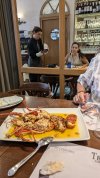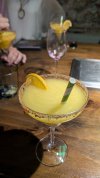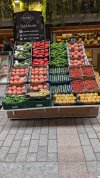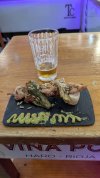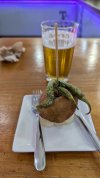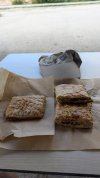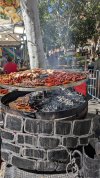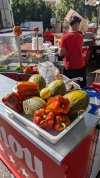Hello,
I am posting this having just completed the Burgos to Ponferrada leg of Camino Frances. This would take my Camino mileage up to around 1,300km over a few shorter trips, so while I would not consider myself a veteran I do consider myself to have some experience of the Camino, and of walking and hiking more generally.
The fact that I am a professionally qualified nutritionist that has an interest in endurance sports is incidental, but I mention it solely because I make these comments from a place of having some nutrition education.
The title speaks for itself. The food on the La Meseta stretch of Camino Frances is beyond absysmal. Protein and vegetables are always a challenge on the Camino, but it reaches new heights on La Meseta. I realise that I may have been unlucky the odd day, but I don’t think that unlucky.
Between low protein child sized portions of pilgrim meals in albergues at night, followed by 4cm of white baguette toasted the following morning masquerading as breakfast, to nowhere near enough protein along the route to satisfy the nutritional guidelines of a sedentary person never mind an active pilgrim, to places being closed at the times people need to eat, to croissants wrapped in plastic bags, to bocadillo after bocadillo the food situation along La Meseta is an embarrassment to the Camino. I generally would eat anything put in front of me, but I struggled continually to get adequate nutrition.
I never come on the Camino looking for an easy time, but the people in hospitality along this part of the route seem to have given up. Perhaps they are exhausted after a long and exceptionally busy season, but regardless it’s extremely disappointing.
I am posting this having just completed the Burgos to Ponferrada leg of Camino Frances. This would take my Camino mileage up to around 1,300km over a few shorter trips, so while I would not consider myself a veteran I do consider myself to have some experience of the Camino, and of walking and hiking more generally.
The fact that I am a professionally qualified nutritionist that has an interest in endurance sports is incidental, but I mention it solely because I make these comments from a place of having some nutrition education.
The title speaks for itself. The food on the La Meseta stretch of Camino Frances is beyond absysmal. Protein and vegetables are always a challenge on the Camino, but it reaches new heights on La Meseta. I realise that I may have been unlucky the odd day, but I don’t think that unlucky.
Between low protein child sized portions of pilgrim meals in albergues at night, followed by 4cm of white baguette toasted the following morning masquerading as breakfast, to nowhere near enough protein along the route to satisfy the nutritional guidelines of a sedentary person never mind an active pilgrim, to places being closed at the times people need to eat, to croissants wrapped in plastic bags, to bocadillo after bocadillo the food situation along La Meseta is an embarrassment to the Camino. I generally would eat anything put in front of me, but I struggled continually to get adequate nutrition.
I never come on the Camino looking for an easy time, but the people in hospitality along this part of the route seem to have given up. Perhaps they are exhausted after a long and exceptionally busy season, but regardless it’s extremely disappointing.
Last edited by a moderator:















